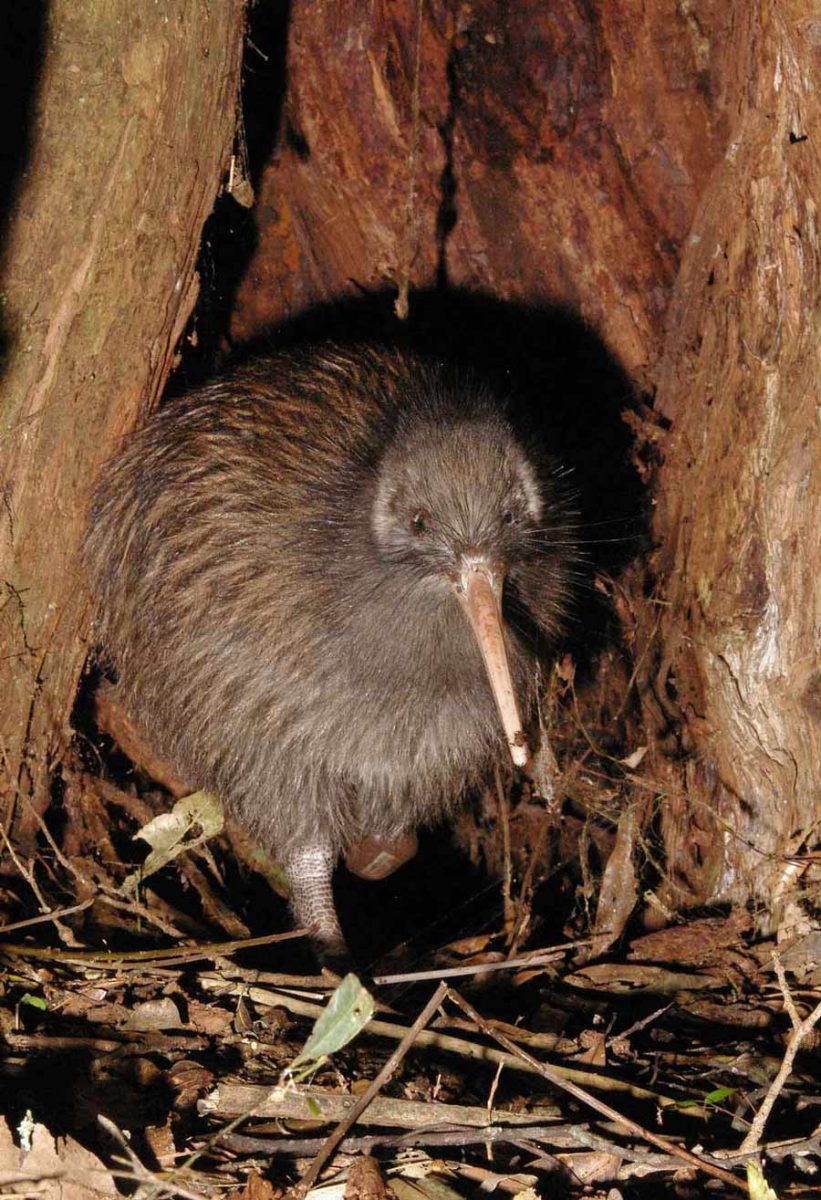Kiwi

The Kiwi is indigenous to New Zealand and is a symbol of national identity. The bird is nocturnal and flightless, with nostrils on the end of its large beak.
The kiwi is endangered and is the sole survivor of an ancient order of birds including the now extinct moas [See also some information further below]. It also has one of the largest egg-to-body weight ratios of any bird – the egg averages 15 per cent of the female’s body weight (compared to two per cent for the ostrich).
Kiwis live in pairs and mate for life, sometimes as long as 30 years.
It’s official – Kiwis are smarter
They may have relatively small heads but according to researchers Kiwis are no ‘bird brains’.
A study, by the University of Auckland, has found the brain size of the Kiwi bird, is comparatively larger and more developed than its peers.
The research team examined the brain size of species of ‘old birds’ (palaeognaths) including kiwi, ostrich, emu, South American tinamou and extinct New Zealand moa and found the forebrain, which is the area where intelligence is thought to lie, was especially developed.
Kiwis have a similar brain-body ratio to ‘new birds’ (neognaths) where as other palaeognaths including moa, have a smaller than expected brain compared to body weight.
The size of the brain was calculated relative to the birds’ body weight, using MRI imaging and CT scans of bird brains and skulls.
The research findings have been published in the journal ‘Brain, Behaviour and Evolution’.
Moa
New Zealand’s moa was the only wingless bird ever known. The giant moa, one of eleven species of moa, was also the tallest known, standing up to 3 metres (9 feet). Many moa bones and skeletons have been found in small caves which the hapless moa fell into. Maori hunted moa, and it is believed the birds became extinct around 400 years ago.

